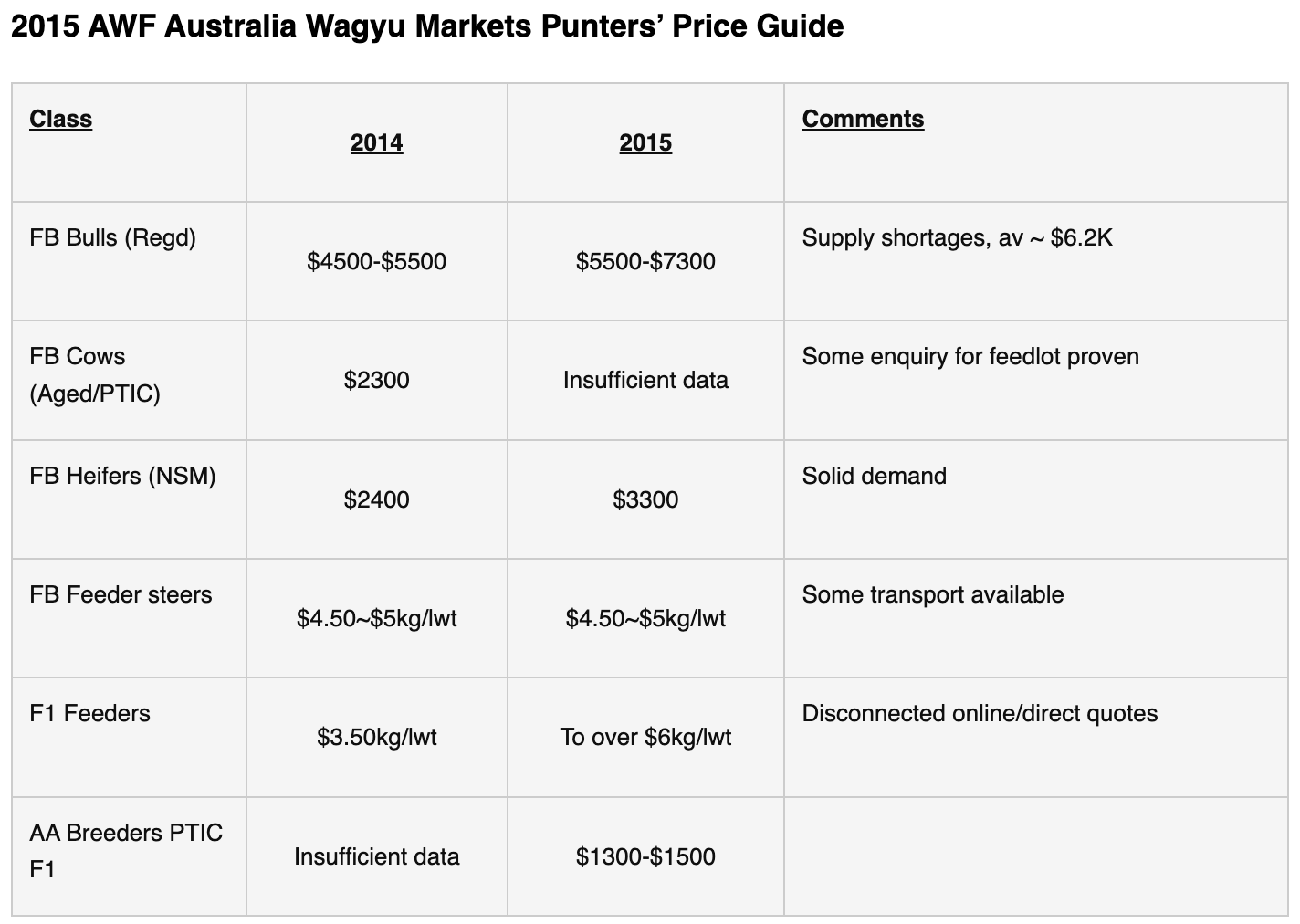Understanding Wagyu Beef Pricing & Descriptors
The legendary high price of Wagyu probably prompts more questions about the ‘breed’ than anything else. To understand this, the first step is to define and differentiate the range of ‘Wagyu’ livestock and grades of ‘Wagyu’ beef products. But taking that the first step can be difficult in Western markets, where there are neither Wagyu-specific grading systems nor published price/quality ‘grids’ for the trading of ANY Wagyu products.
And Western producers of Wagyu crossbred cattle are often keen to infer ‘Wagyu nomenclature smokescreens’ over their products, possibly to conceal the fact they are not ‘pure Wagyu’. This ensures them of a good price, but customers of no guaranteed satisfaction whatsoever. Whereas, in Japan, use of the ‘Wagyu’ descriptor is tightly regulated across the beef market.
Reality is: there is no such breed as ‘Wagyu’.
In the Japanese home market, ‘Wagyu’ is a collective descriptor applied to five breeds that the Japanese consider ‘their cattle’. To cut a long story short, however, one of these breeds, the Japanese Black (JB), makes up about 94% of Japanese production, and it is similarly on Japanese Black genetics that most Western ‘Wagyu’ production is founded.
Today, you can definitely get ‘pure Japanese Black’ fullblood beef in leading beef markets around the world, and it’s worth looking for.
So given that the Japanese Black is the dominant breed in world Wagyu, our analysis focuses on a comparative review of prices achieved by this breed and outcrosses in Australia, and then in Japan.
It should be noted that due to unique market structures, high Japanese domestic market prices are unlikely to ever be attained elsewhere. And Japanese pricing is supported by a unique quality grade system that supports discriminating purchasing. Nonetheless, Japanese market price/quality relativity is the effective model for Wagyu beef global pricing, and Japanese beef grading quality standards far exceed those available to most Western producers.
We start with recent Australian markets and then move to Japan:
2015 Australian Domestic Pricing Overview
Wagyu feeder and breeder returns have substantially exceeded rewards from other breeds for most of the 25+ years of Australian breed history. But in mid-2015, the Australian Wagyu industry was surprised by a substantial upwards price revision based almostexclusively in online auctions-based marketing. This has set new benchmarks for Australian Wagyu livestock pricing and the impact is likely to be long-lasting.
Background to 2015 Price Shake-Up
The first major test to the traditional ‘Wagyu price premium’ came in 2007-2008, when drought and the GFC struck in unison. Although demand declined overall and prices fell, the actual price premium remained intact throughout the GFC and a turnaround was well under way by 2013.
By 2015, all lost ground had been recovered, the post-mining-boom collapse of the Australian dollar (relative to $USD in particular) had re-invigorated both export demand and competitiveness, while the entry of major new buyers (such as JBS Australia) put severe pressure on supply.
Seedstock markets came under simultaneous upward pressure, in particular from soaring demand for bulls for F1 production. But in the middle of this, the embryonic but healthy market for fullblood (almost exclusively Japanese Black) feeder cattle stood still as F1 feeder prices sprinted past. Subsequent challenges for fullblood feeder producers are discussed below.
The 2015 price boil-over resulted from unprecedented demand pressure running headlong into long term deficiencies in Wagyu market transparency and benchmark pricing – including lack of competitive market venues equivalent to regional stock auctions, the absence of objective ‘markets’ information, or widely publicised competitive ‘buy’ grids. Most transactions to this point were (and remain/have reverted to) direct negotiation between producer and feedlot or exporter. Few traditional agents have operated successfully as longterm players in Wagyu, so well-informed inter-agent competition was also lacking.
Pivotal Role Of On-Line: AuctionsPlus
The inevitable rupture of this 2015 ‘pressure bubble’ occurred in the only national spot market available to Wagyu producers – being the national online livestock auction site, AuctionsPlus, owned by major agency chain Landmark . The ‘bubble’ was preceded by a ‘pre-match teaser’ auction at the Australian Wagyu Association’s annual conference auction, simultaneously online, held in May 2015.
Between July-October 2015, the role of on-line auctions on the Australian Wagyu livestock trade was to create a new set of market price benchmarks. Quotations had stabilised by October, and on-line listing volume had fallen sharply. This is a probable indicator that transactions had returned to traditional private treaty negotiation, but most likely using on-line pricing for ‘rough’ benchmarks.
The online auctions provided little guide to preferred genetics, with inconsistent demand from commencement. For example, bulls bred to high Tajima cross-breeding specs were passed in around $5,500 in the week commencing 12 October; whereas FB bulls with pedigrees appealing in fullblood production made well over $6200 the previous week. In the same week, unjoined FB heifers av. 148kg/lwt made $3550/hd.
The market entered an inevitable ‘correction’ mode in w/c 12/10/15, with cattle of all breeds and most categories impacted to some level.
Based on the online and anecdotal private treaty quotations combined, the following table is a ‘punters’ guide’ to Australian Wagyu livestock in Q4 2015.
(Click for larger picture).
Let’s Talk About Your Wagyu Breeding Plan
We'll Find the Right Wagyu Breeding Solution for You
Call us:

